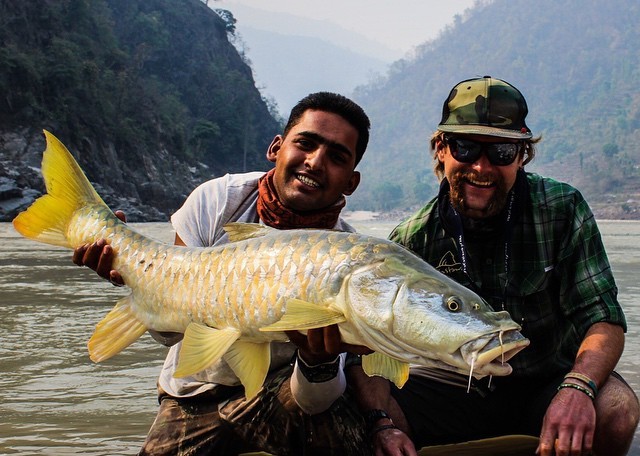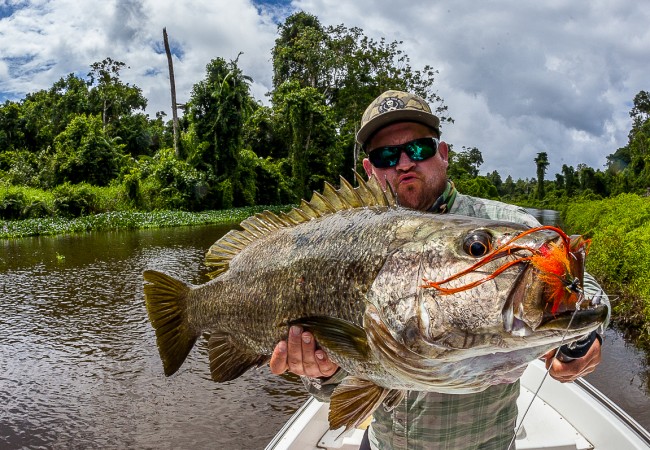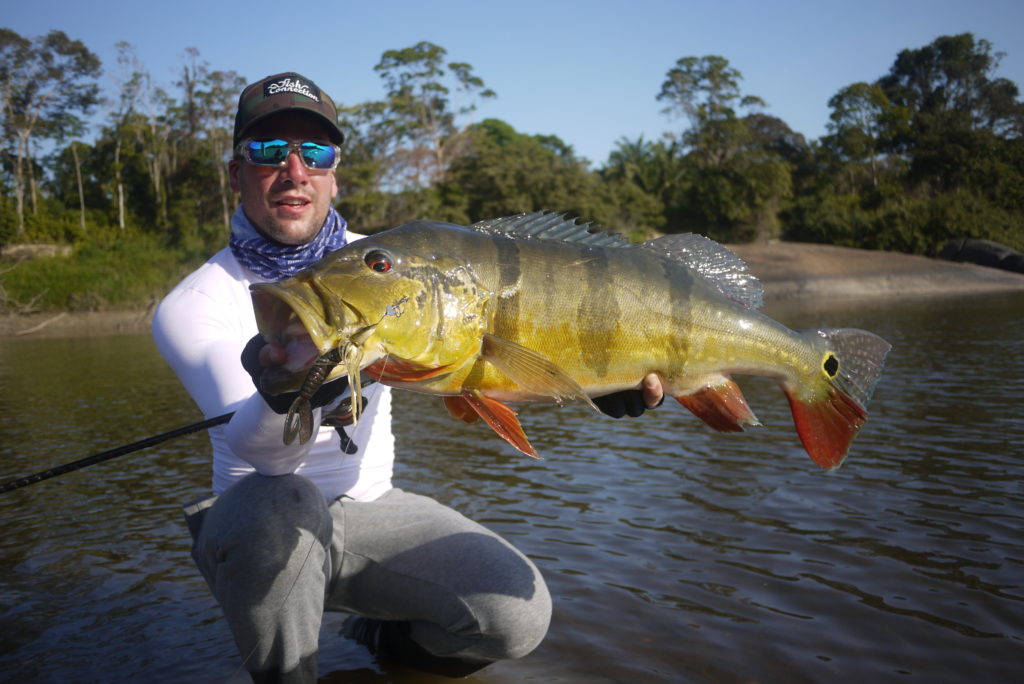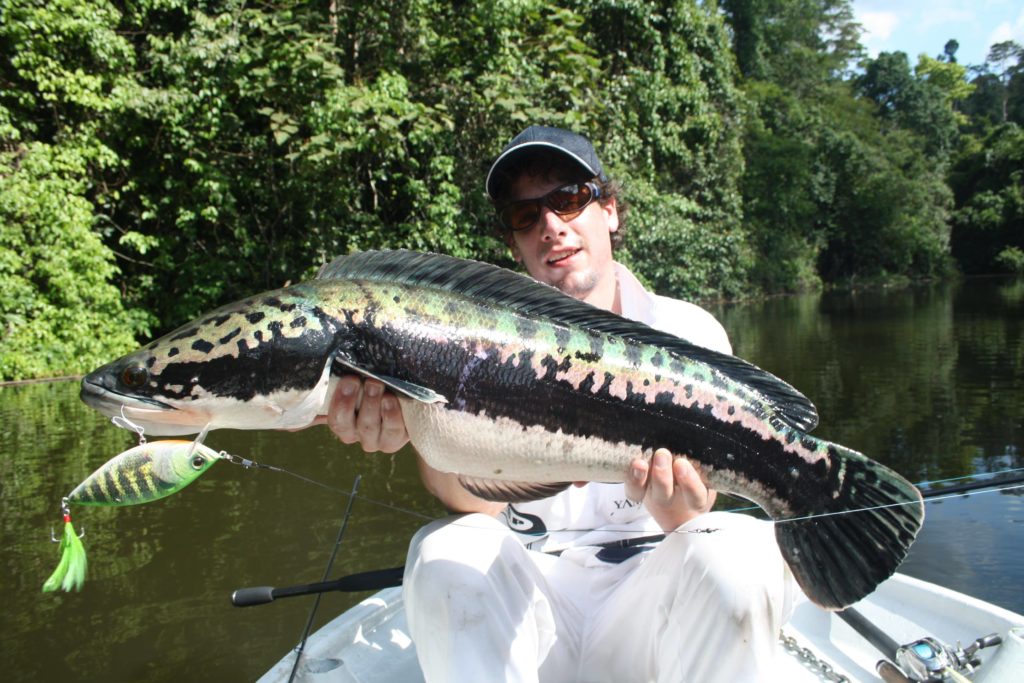
The fario trout is the emblematic salmonid of our European rivers. As beautiful as they are combative, fario trout have fascinated anglers for generations. In this article, we're going to tell you all you need to know about salmo trutta farioThis is a very important fish species, whether it be its physical characteristics, its natural habitat or the techniques used to catch it.
Our article in brief :
The fario trout is THE emblematic fish of our European rivers. It fascinates anglers with its fighting spirit and delicate flesh.
- Unique features A magnificent coat dotted with black and red spots. Its average size ranges from 20 to 70 cm.
- A special habitat The farion trout likes the cool, well-oxygenated waters of mountain rivers and lakes.
- A variety of fishing techniques In France, fario trout are generally caught on flies, carp or lures.
- A fragile species The fario trout is threatened by pollution, warming waters, overfishing and the depletion of its natural habitat. It therefore requires more responsible and sustainable fishing practices.
Portrait of the fario trout: an aquatic beauty
Fario trout, or Salmo trutta fario for the purists, is a jewel of our rivers and mountain lakes. A member of the salmonid family, this fish has a distinctive coat for which it is renowned. Dotted with black and red dotsIts livery adapts to its habitat, changing from golden brown to olive green depending on the waters it frequents.
The size of the fario trout generally varies between 20 and 70 cm, but it is not uncommon to come across some giants, particularly in the Dordogne, Isère and Gaves rivers in the south-west, where some trout can reach over 80 cm!
The following table summarises the main characteristics of the fario trout:
| Features | Description |
|---|---|
| Medium size | 20-70 cm |
| Average weight | 200 g to 3.5 kg |
| Longevity | 6 to 13 years |
| Sexual maturity | 2-3 years |

The fario trout is a species carnivorous and opportunistic. Its varied diet consists of :
- Small fish
- Aquatic invertebrates
- Land insects that have fallen into the water
- Molluscs
- Frogs
This dietary adaptability makes it a hardy species, capable of acclimatising to different environments, as long as the water is fresh and well oxygenated.
Habitat and reproduction of fario trout
The fario trout is a true bioindicator of water quality. Its presence in a watercourse is synonymous with a healthy aquatic ecosystem. It is particularly fond of cold water, with a temperature of between 0 and 20°C, clear and well oxygenated. This is why it is mainly found in rivers, streams and mountain lakes.
These areas are ideal for the reproduction and development of fario trout in Europe. The reproduction (spawning) period for brown trout generally extends from October to February. However, this time range can vary according to region, climate and altitude. During this crucial period, the female lays between 1,500 and 5,000 eggs in the gravel of current areas, known as spawning grounds.
As a result, the fario trout benefits from specific regulations that protect it from fishing pressure during the period of reproduction and gestation of the eggs. As a result, fishing for brown trout is generally open from March to September. Their legal size varies from river to river, but is generally between 25 and 30 cm.
However, some rivers, areas or even départements have introduced special rules for trout fishing. For example, there are no-kill zones, where you are not allowed to keep any trout caught, and zones where you can only fish with barbless hooks. We therefore advise you to find out about local regulations before you go fishing.
It is vital to preserve these spawning grounds to ensure the survival of the species. During our fishing sessions, we always take care to avoid trampling these sensitive areas and we strongly encourage all anglers to do the same.
How to fish for brown trout
Fario trout fishing is a real challenge for anglers of all levels. It requires patience, observation, discretion and technique. In fact, this species, territorial and waryIt is not easily trapped. That's what makes it such a popular fish with sport fishermen.
There are several techniques available to fans of fario trout. Among them are the following:
- Fly fishing for trout
- Trout fishing with toc
- Lure fishing for trout
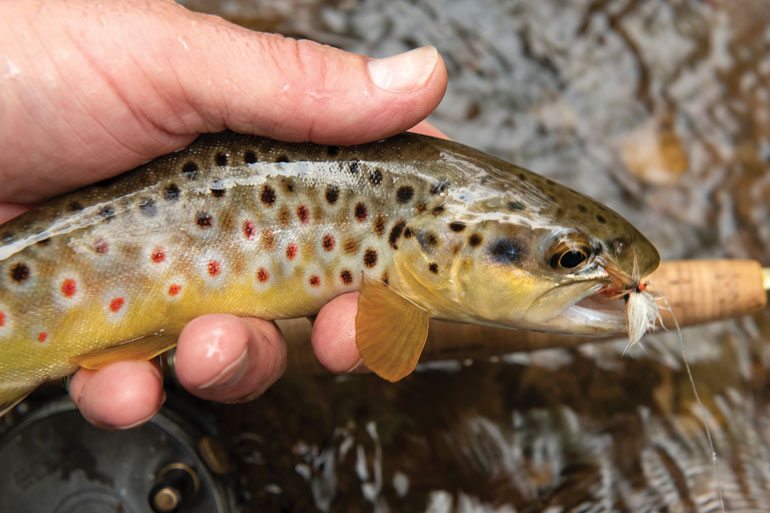
Each of these fishing techniques has its enthusiasts and its subtleties. We've already described them in several articles. Personally, we prefer trout fishing with lures, which offers a more dynamic and sporting experience for our tastes.
Preservation and future of the fario trout
Although the fario trout is still present in many European rivers, it faces a number of threats. The development of watercoursesPollution and the massive release of farmed trout are just some of the factors endangering wild populations.
As responsible fishermen, we have a crucial role to play in preserving this iconic species. Here are a few recommendations that we are applying and sharing with our community:
- Practice catch and release as much as possible
- Respect the minimum catch sizes
- Of course, you should never fish during the breeding season.
- Avoid walking in the water at the start of the season so as not to crush nests, eggs or fry.
- Report any pollution or anomaly observed on watercourses
The future of the brown trout depends on our ability to reconcile fishing with environmental protection. With this in mind, we regularly take part in awareness-raising and riverbank clean-up days, combining the pleasure of fishing with practical ecological action.
The fario trout is a real treasure of our French and European rivers. Their presence in a river is a sign that it is in good health. It is therefore a key indicator of the quality of our fish stocks.
Fishing for this species is a heritage that has been passed down from generation to generation. If we adopt a respectful and sustainable approach, then we can continue to enjoy magical moments at the water's edge, while ensuring the survival of this species for years to come.

